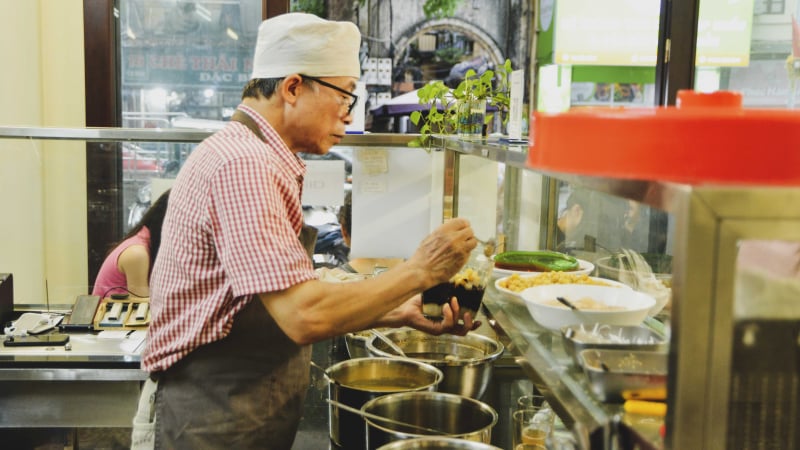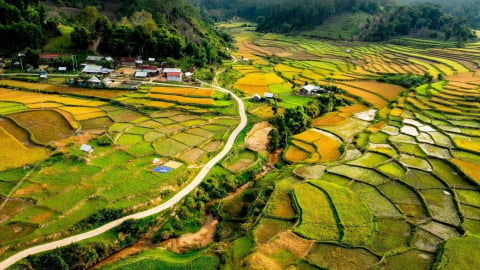Amidst the ups and downs of history, the hustle and bustle of modern society and the constant changes in taste, “che” has quietly and persistently maintained its unique position in the hearts of Vietnamese people. Che is not only a dessert, but also a living symbol of the sophistication, harmony and depth of the Vietnamese soul.
The culture of eating sweet soup, a flow that permeates through time Since ancient times, our ancestors have created a philosophy of living in deep harmony with nature, a persistent undercurrent that flows throughout every meal. That is the philosophy of "seasonal food", where all vegetables, fruits, and dishes follow the cycle of heaven and earth, without forcing or going out of season. That appreciation is not only a culinary choice but also a way to express gratitude for the gifts of nature. In that peaceful flow, sweet soup also blends in like a gentle whisper of mother earth, without ostentation, without forcing, just in the right season, at the right time, it will naturally permeate deep into the hearts of each person.
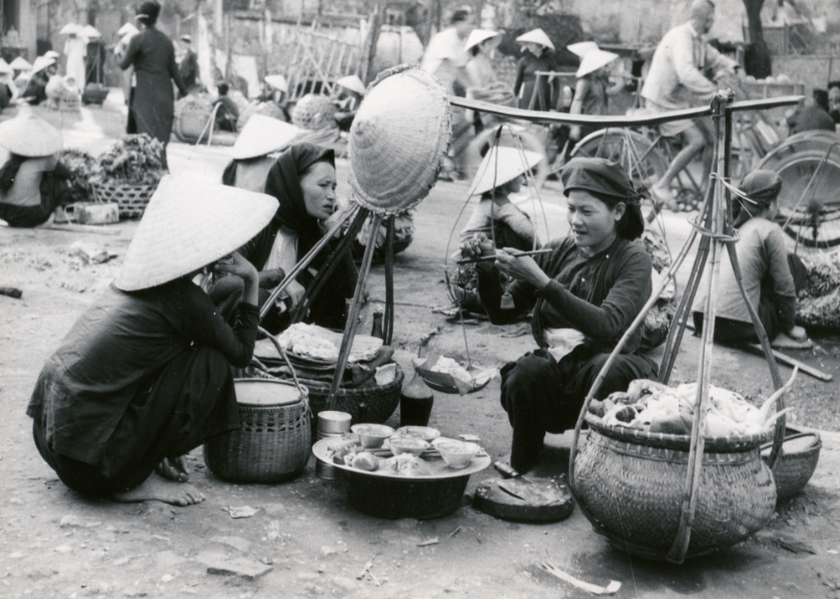
In this flowing stream, tea also blends in like a gentle whisper of mother earth, without ostentation, without coercion.
Sweet soup has long become an indispensable part of the spiritual and material life of Vietnamese people. On the solemn offerings during holidays, full moons, and death anniversaries, sweet soup is always present as a pure gift to ancestors, expressing respect and gratitude. On hot summer days, a bowl of cool black bean sweet soup is not only a refreshing treat but also an unforgettable childhood flavor.

Variety of Vietnamese tea
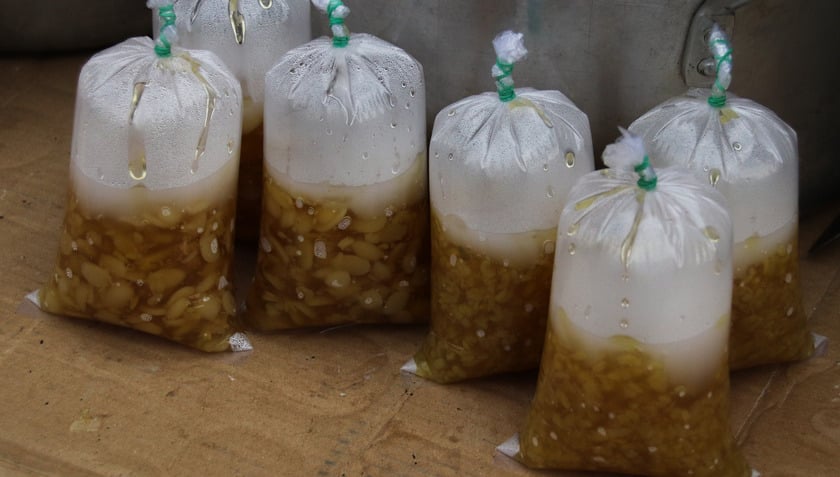
A bowl of rustic sweet soup is still preserved not only because of culinary habits, but because people never forget their natural roots.
Each region, each family puts into a bowl of chè a unique character, a unique soul, but in general, they are all gentle, delicate and deeply attached to the spiritual life of the Vietnamese people. Chè, in essence, is a dish with a sweet taste, a snack, an afternoon snack waiting for dinner, or a snack during intimate conversations. For a long time, Vietnamese chè has gone beyond the definition of a simple dish, becoming a cultural feature, a subtle expression of the Vietnamese soul.
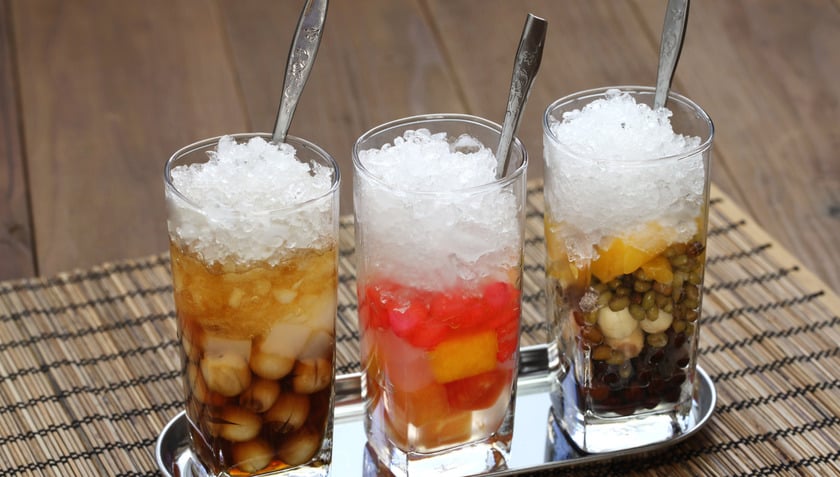
The journey to discover Vietnamese tea is a trip through three regions of the country, where each region brings its own flavor and story.
Northern elegant tea
Northern sweet tea stands out for its simplicity but is extremely sophisticated. The aroma of the tea does not come from artificial flavors but from the original, pure aroma of the ingredients themselves. The cooking process requires meticulous attention to every detail, from choosing fresh green rice and beans to the technique of dropping the beans into the pot so that they do not sink to the bottom, maintaining perfect softness.
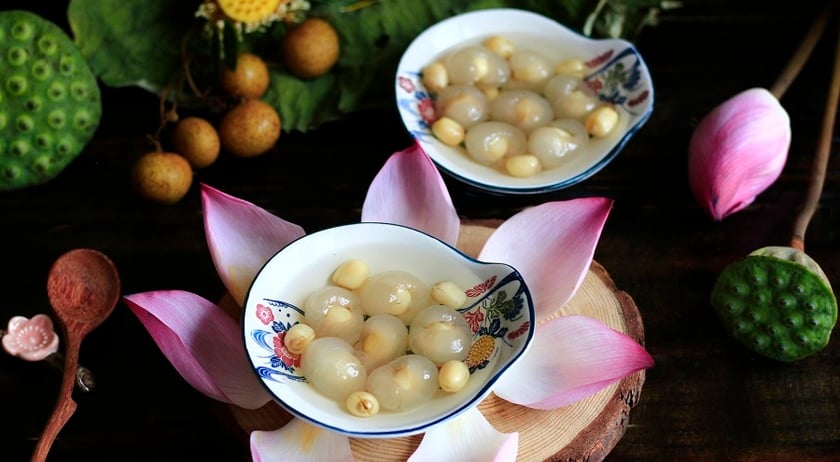
Northern tea often has a clear, elegant beauty from lotus tea, green rice tea, ba cot tea to areca flower tea.
On hot summer afternoons in the North, sometimes without even calling the name of the dish, just hearing the call "Ai tao pho, banh duc mat day..." is enough to soften the heart like the smooth bean jelly. No need for modern refrigeration or glass cabinets, an old wooden or aluminum carrying basket, lined with banana leaves or pure white gauze is where tao pho "resides" in a simple way. The tofu is as soft as lotus petals, poured with a fragrant sugar water mixed with old ginger, sometimes dotted with a few tiny tapioca pearls, that is enough to soothe a harsh June afternoon.

Soft tofu pieces like lotus petals, served with fragrant sugar water mixed with old ginger.
Sweet soup of the Central region's five-flavor land
It is often said that the Central region is the land of "five flavors": salty - sweet - sour - spicy - bitter, especially rich in Hue flavor. Central region sweet soup is not only a dessert but also used as a solemn offering during Tet holidays, showing the sophistication and quintessence of royal cuisine.

Central region desserts must have rich flavor and unique color.
In Hue – the poetic imperial land, summer cannot be without the dish of tapioca dumplings with roasted pork. It may sound strange that the fatty roasted pork is wrapped in a layer of soft tapioca dumplings, cooked with warm ginger syrup, but the bold contrast between salty and sweet, between chewy and crispy, between hot and cool is the pinnacle of royal culinary creativity. This dish has been preserved and popularized by the people as a unique street food, attracting tourists from all over.
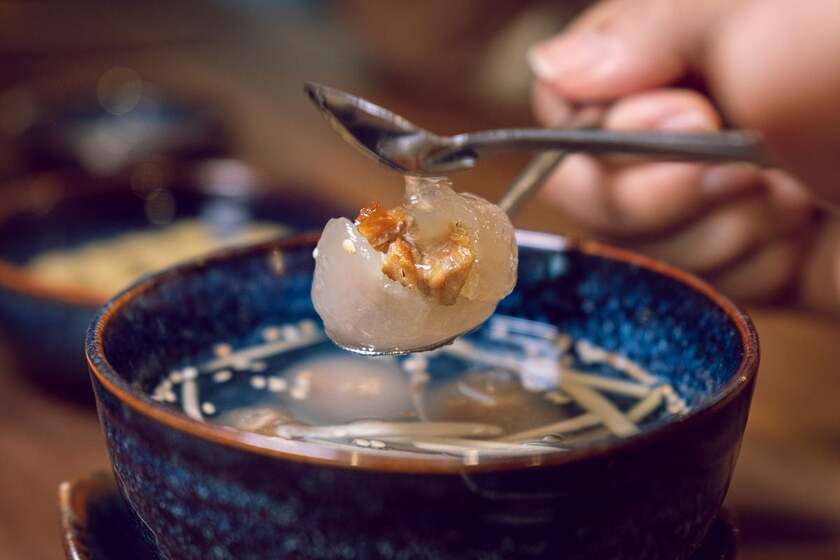
Strange yet familiar dessert from Hue
Not only royal sweet soup, the Central region sweet soup is also diverse with rustic but equally attractive sweet soups. Quang region's sweet corn sweet soup has the sweet milky aroma of young corn, served with a little rich coconut milk.
Southern tea for two rainy and sunny seasons
Coming to the South, the two seasons of rain and sun, the desserts also change. Southerners have the habit of using seasonal foods to cook desserts. Sometimes there are hot bowls of tapioca desserts, or banana desserts.

The dishes here are often full, sweet and colorful like the tropical sunshine.
Southern sweet soup can be divided into two main schools: Saigon sweet soup with the strong influence of the Chinese community living here, and Western sweet soup with a strong riverine identity. Although at first glance they look similar, these two styles of sweet soup still have distinct differences. Saigon sweet soup is often more diverse in ingredients, color and sweetness, with familiar names such as black sesame sweet soup, quail egg sweet soup. Meanwhile, Western sweet soup presents a richer culinary picture, the dishes are often full, sweet and colorful like the tropical sunshine.
Nowadays, sweet soup can be varied with the addition of jelly, fruits, and even imported sweet soups from Thailand, Malaysia, etc., bringing new flavors. However, no matter how varied, the core of Vietnamese sweet soup is still light, rustic, and quintessential.
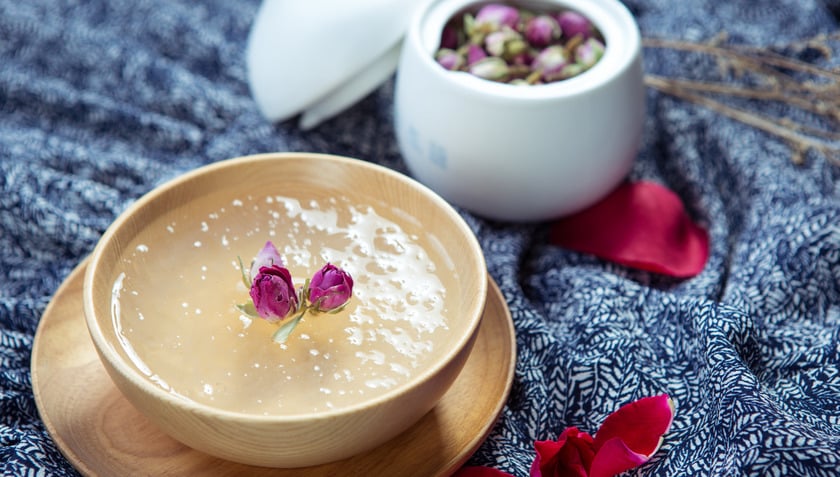
Vietnamese sweet soup has long been more than just a dish, but a cultural feature, a subtle expression of the Vietnamese soul.
Sweet soup does not require excessive creativity or complexity. Each time you cook sweet soup, you reminisce about the bountiful harvest, the old garden, or the familiar street vendor cries of your childhood. Sweet soup is therefore not just a snack, but a soft slice of culture, where the Vietnamese spirit permeates every sweet spoonful.
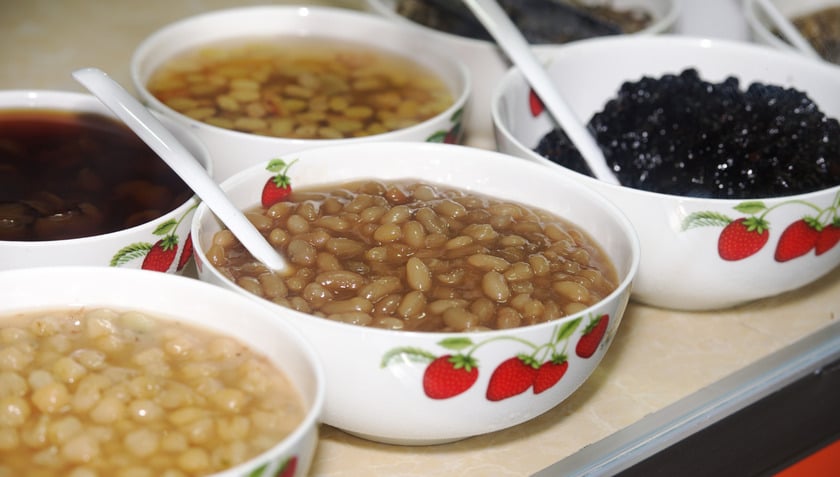
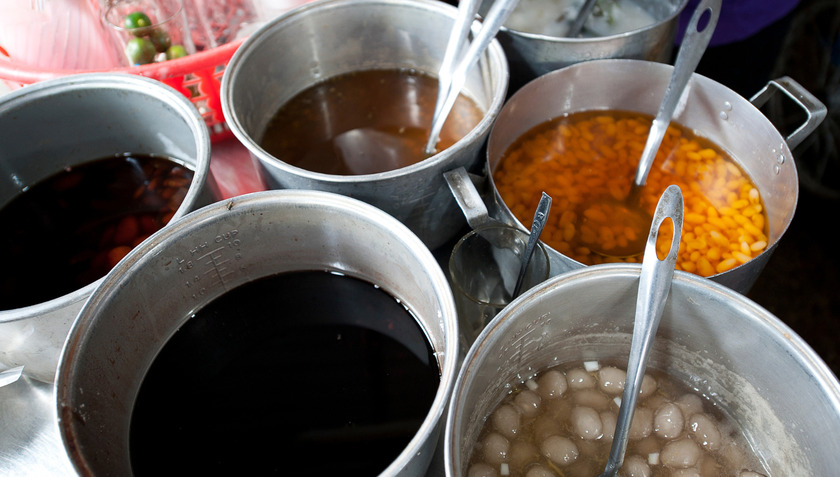
It is a part of the community, a strong bridge between the past and the present, between the simple and the sacred. Preserving traditional sweet soup is preserving simplicity, preserving a part of the soul of Vietnamese culture. Because sweet soup is not just for eating, but to feel the sky and earth, the harvest, the people, the identity, and a whole culinary civilization that has been cherished from the smallest things.






